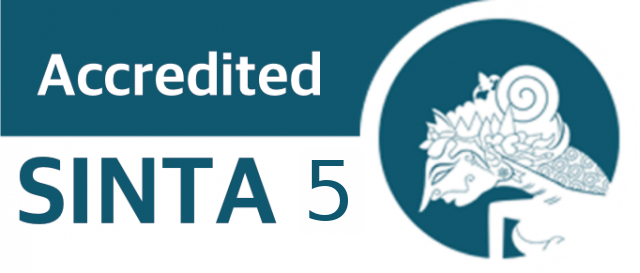The Effect of Tahajjud on Students' Stress Mediated By Personality Types
DOI:
https://doi.org/10.30595/hmj.v7i2.24296Keywords:
Dhikr, Personality type, Stress level, TahajjudAbstract
New Medical students experience massive adaptation from school to university level. Some of them experience adaptation difficulties, even stress. Religious activities are believed to provide serenity, stress reduction, and confidence enhancement, but the magnitude needs to be clarified. It is also postulated that different personality types (phlegmatic, sanguine, choleric, and melancholic) have different stress-coping mechanisms. We aim to investigate the impact of tahajjud on stress levels and how personality type reacts to these changes. Seventy-four first-year medical students evaluated their stress levels with Kessler's Psychological Distress Scale (KPDS) for the student before and after three months of continuous daily exposure with tahajjud and dhikr. The students were also stratified based on the personality types based on the Hippocrates-Galenus classification. We found that tahajjud and dhikr significantly reduce student's stress levels (Wilcoxon test P<0.001). Melancholy types take huge advantages from these religious activities regarding stress reduction compared to others (ANOVA, p<0.018). Regular Tahajjud and dhikr could be recommended programs in Muslim institutions.
References
1. Toker S, Melamed S. Stress, Recovery, Sleep, and Burnout. The Handbook of Stress and Health 2017 p. 168-85.
2. Ossai EN, Eze II, Onyenakazi RC, Ugebe EI, Eze BC, Obasi OC. How large is The Burden of Depression in A Medical School? A Cross-Sectional Study among Medical Students in Nigeria 2020
3. Astutik E, Sebayang SK, Puspikawati SI, Tama TD, Sintha DM, Dewi K. Depression, anxiety, and stress among students in newly established remote university campus in Indonesia. Malaysian Journal of Medicine and Health Sciences 2020; 16 (1): 270-7.
4. Owczarek JE, Lion KM, Radwan-Oczko M. Manifestation of stress and anxiety in the stomatognathic system of undergraduate dentistry students. Journal of International MedicalResearch 2020;48(2):0300060519889487
5. AbdAleati NS, Mohd Zaharim N, Mydin YO. Religiousness and Mental Health: Systematic Review Study. Journal of Religion and Health. 2016;55(6):1929-37. https://doi.org/10.1007/s10943-014-9896-1
6. Handelzalts JE, Stringer MK, Menke RA, Muzik M. The Association of Religion and Spirituality with Postpartum Mental Health in Women with Childhood Maltreatment Histories Journal of Child and Family Studies 2020;29(2):502-13. https://doi.org/10.1007/s10826-019-01595-2
7. Toledo G, Ochoa CY, Farias AJ. Religion and spirituality: their role in the psychosocial adjustment to breast cancer and subsequent symptom management of adjuvant endocrine therapy. Supportive Care in Cancer 2021;29(6):3017-24 https://doi.org/10.1007/s00520-020-05722-4
8. Kowalczyk O, Roszkowski K, Pawliszak W, Rypel A, Roszkowski S, Kowalska J, et al. Religion and Spirituality in Oncology: An Exploratory Study of the Communication Experiences of Clinicians in Poland. Journal of Religion and Health 2021 https://doi.org/10.1007/s10943-021-01343-1
9. Ray C, Wyatt TR. Religion and Spirituality as a Cultural Asset in Medical Students. Journal of Religion and Health 2018;57(3):1062-73. https://doi.org/10.1007/s10943-017-0553-3
10. Perera CK, Pandey R, Srivastava AK. Role of Religion and Spirituality in Stress Management Among Nurses. Psychological Studies 2018;63(2):187-99. https://doi.org/10.1007/s12646-018-0454-x
11. Imperatori C, Bersani FS, Massullo C, Carbone GA, Salvati A, Mazzi G, et al. Neurophysiological correlates of religious coping to stress: a preliminary eeg power spectra investigation. Neuroscience letters 2020;728:134956.
12. Yin Y, Li L, Jin C, Hu X, Duan L, Eyler LT, et al. Abnormal baseline brain activity in posttraumatic stress disorder: A resting-state functional magnetic resonance imaging study. Neuroscience Letters 2011;498(3):185-9. https://doi.org/https://doi.org/10.1016/j.neulet.2011.02.069
13. Al Zamil L. Perceived level of stress, & coping strategies among Saudi nursing student IOSR J Nurs Health Sci 2017; 6: 06-13.
14. Vorkapić ST, Tatalović Vorkapić S. Electrophysiological differences in sanguine, choleric, phlegmatic, and melancholic. The Romanian Journal for Psychology, Psychotherapy and Neuroscience 2011; 1: 67-96.
15. Rakhmanina L, Martina F, Jayadi N. The comparison study on two-types of students personality: Sanguine and phlegmatic toward their English speaking ability. Professional Journal of English Education 2020;3(4):443-52.
16. Pan C, Xu J, Fu J. Effect of gender and personality characteristics on the speed tendency based on advanced driving assistance system (ADAS) evaluation. Journal of Intelligent and Connected Vehicles 2021
17. Thakur MP, Rashid MC. Temperament personality trait and its impact on prefernce for ewallet usage. Internationa Journal of creative research thoughts 2021;9(1):15-20.
18. Firmanda R, Fitriati D, editors. Classification of Personality Type by Typology Hippocrates-Galenus Using Hybrid Naïve Bayes Decision Tree Algorithm. 2018 Third International Conference on Informatics and Computing (ICIC); 2018: IEEE.
19. Suharsono A, Amriani TN. Recognizing personality using hippocrates's personality test IJIET (International Journal of Indonesian Education and Teaching). 2021;5(2):158-67.
20. Andrews G, Slade T. Interpreting scores on the Kessler psychological distress scale (K10). Australian and New Zealand journal of public health 2001;25(6):494-7.
21. Team RC. R: A language and environment for statistical computing. R Foundation for Statistical Computing 2020.
22. Mohammad KM, Shariatnia K. Effectiveness of spiritual therapy on the life quality of the women with breast cancer in Tehran. 2017.
23. Tajbakhsh F, Hosseini M, Sadeghi Ghahroudi M, Fallahi Khoshkenab M, Rokofian A, Rahgozar M. The effect of religious-spiritual care on anxiety post surgery coronary artery bypass graft patients. Iranian Journal of Rehabilitation Research in Nursing (IJRN) 2014;1(1):51-61.
24. Pramesona BA, Taneepanichskul S. The effect of religious intervention on depressive symptoms and quality of life among Indonesian elderly in nursing homes: A quasi-experimental study. Clinical Interventions in Aging. 2018;13:473.
25. Nikfarjam M. The efficacy of religious training (prayer) on the improvement of the schizophrenic patients’ quality of life at Sina Psychiatric Hospital (Bakhtiari Province, 2011). Journal of Arak University of Medical Sciences. 2011;13(5):133-8.
26. Sharif NSH, Hojatti H, Nazari R, Qorbani M, Akhoondzale G. The effect of prayer on mental health of hemodialysis patients. Iranian Journal of Critical Care Nursing. 2012;5.
27. Masoumi M, Jokar Z, Razaghzadeh R, Rabiei Z. Comparison of the effects of Quran and instrumental music on the spiritual health of hemodialysis patients. Nursing Journal of the Vulnerable (NJV). 2017;4(10):24-34.
28. Saffari M, Zeidi I, Pakpour A. Role of religious beliefs in quality of life of patients with cancer. Hakim Research Journal. 2012;15(3):243-50.
29. Chanen AM, Nicol K, Betts JK, Thompson KN. Diagnosis and treatment of borderline personality disorder in young people. Current psychiatry reports. 2020;22(5):1-8.
30. Trull TJ, Freeman LK, Vebares TJ, Choate AM, Helle AC, Wycoff AM. Borderline personality disorder and substance use disorders: an updated review. Borderline personality disorder and emotion dysregulation. 2018;5(1):1-12.
31. Bekker MH, Boselie KA. Gender and stress: is gender role stress? A re‐examination of the relationship between feminine gender role stress and eating disorders. Stress and Health: Journal of the International Society for the Investigation of Stress. 2002;18(3):141-9.
32. Calvarese M. The effect of gender on stress factors: An exploratory study among university students. Social Sciences. 2015;4(4):1177-84.
33. Schmaus BJ, Laubmeier KK, Boquiren VM, Herzer M, Zakowski SG. Gender and stress: Differential psychophysiological reactivity to stress reexposure in the laboratory. International Journal of Psychophysiology. 2008;69(2):101-6.
34. Karaman MA, Lerma E, Vela JC, Watson JC. Predictors of academic stress among college students. Journal of College Counseling. 2019;22(1):41-55.
35. Butler K, Klaus K, Edwards L, Pennington K. Elevated cortisol awakening response associated with early life stress and impaired executive function in healthy adult males. Hormones and Behavior. 2017;95:13-21. https://doi.org/https://doi.org/10.1016/j.yhbeh.2017.07.013
Downloads
Published
Issue
Section
License
Copyright (c) 2025 Maryam Sidika, Susiyadi Susiyadi, Titik Kusumawinakhyu, Abidah Safithri, Muhammad Almanfaluthi, Stefani Widodo

This work is licensed under a Creative Commons Attribution 4.0 International License.
For submission of manuscripts to the Herb-Medicine Journal, the authors must certify that:
I have been authorized by my co-author to submit the manuscript to the Herb-Medicine Journal
I hereby declare, on behalf of myself and my co-authors, that:
The submitted manuscript is original work and has not been published in another peer-reviewed journal or is being considered for publication by another journal. Also, the manuscript does not infringe any existing copyright or other third party rights.
The manuscript does not contain material that may violate the law, slander, or SARA, in any way, violates the terms and conditions contained in the agreement
I/we have taken care that the scientific knowledge and all other statements contained in the manuscript are in accordance with authentic facts and formulas and will not, if followed appropriately, harm the user
No liability shall be assumed by Herb-Medicine Journal, its staff or members of the editorial board for any injury and/or damage to persons or property as a matter of product liability, negligence or otherwise, or from the use or operation of any method, product instructions, advertising , or ideas contained in publications by the Herb-Medicine Journal
Authors who publish in the Herb-Medicine Journal certify that all authors have read and agree to the contents of the Cover Letter or the Terms and Conditions. Plagiarism is strictly prohibited, and by submitting a manuscript for publication, the author agrees that the publisher has the legal right to take appropriate action against the author, if plagiarism or false information is found. Once submitted to the Herb-Medicine Journal, authors will not withdraw their manuscript at any stage prior to publication.
The author owns the copyright and grants the journal rights for first publication with the work simultaneously licensed under a Creative Commons Attribution License which allows others to share the work with acknowledgment of the work's authorship and initial publication in this journal.
Authors may enter into separate additional contractual agreements for the non-exclusive distribution of the published journal version of the work (for example, posting it to an institutional repository or publishing it in a book), with acknowledgment of its initial publication in this journal.
Authors are permitted and encouraged to post their work online (for example, in institutional repositories or on their websites) prior to and during the submission process, as this can lead to productive exchanges, as well as earlier and larger citation of published work (See The Effects of Open Access).
Untuk pengiriman naskah ke Herb-Medicine Journal, penulis harus menyatakan bahwa:
- Saya telah diberikan otorisasi oleh rekan penulis saya untuk memasukkan naskah ke Herb-Medicine Journal
- Saya dengan ini menyatakan, atas nama saya dan rekan penulis saya, bahwa:
- Naskah yang dikirimkan adalah karya asli dan belum pernah diterbitkan dalam jurnal peer-review lain atau sedang dipertimbangkan untuk diterbitkan oleh jurnal lain. Serta, naskah tidak melanggar hak cipta yang ada atau hak pihak ketiga lainnya.
- Naskah tidak mengandung materi yang mungkin melanggar hukum, memfitnah, atau SARA, dengan cara apa pun, melanggar syarat dan ketentuan yang tercantum dalam perjanjian
- Saya / kami telah berhati-hati bahwa pengetahuan ilmiah dan semua pernyataan lain yang terkandung dalam naskah sesuai dengan fakta dan formula otentik dan tidak akan, jika diikuti dengan tepat, merugikan pengguna
- Tidak ada tanggung jawab yang ditanggung oleh Herb-Medicine Journal, stafnya atau anggota dewan editorial untuk setiap cedera dan/atau kerusakan pada orang atau properti sebagai masalah pertanggungjawaban produk, kelalaian atau sebaliknya, atau dari penggunaan atau pengoperasian metode, produk apa pun instruksi, iklan, atau ide yang terkandung dalam publikasi oleh Herb-Medicine Journal
Penulis yang menerbitkan dalam Herb-Medicine Journal menyatakan bahwa semua penulis telah membaca dan menyetujui isi Surat Pengantar atau Syarat dan Ketentuan. Plagiarisme dilarang keras, dan dengan menyerahkan naskah untuk publikasi, penulis setuju bahwa penerbit memiliki hak hukum untuk mengambil tindakan yang pantas terhadap penulis, jika ditemukan plagiarisme atau informasi palsu. Setelah diserahkan ke Herb-Medicine Journal, penulis tidak akan menarik naskah mereka pada tahap apa pun sebelum dipublikasikan.
Penulis memiliki hak cipta dan memberikan hak jurnal untuk publikasi pertama dengan karya yang secara simultan dilisensikan di bawah Lisensi Creative Commons Attribution yang memungkinkan orang lain untuk berbagi karya dengan pengakuan kepengarangan karya dan publikasi awal dalam jurnal ini.
Penulis dapat membuat perjanjian kontrak tambahan yang terpisah untuk distribusi non-eksklusif versi jurnal yang diterbitkan dari karya tersebut (misalnya, mempostingnya ke repositori institusional atau menerbitkannya dalam sebuah buku), dengan pengakuan atas publikasi awalnya di jurnal ini.
Penulis diizinkan dan didorong untuk memposting pekerjaan mereka secara online (misalnya, dalam repositori institusional atau di situs web mereka) sebelum dan selama proses pengajuan, karena dapat menyebabkan pertukaran yang produktif, serta kutipan yang lebih awal dan lebih besar dari karya yang diterbitkan (Lihat The Effect of Open Access).













